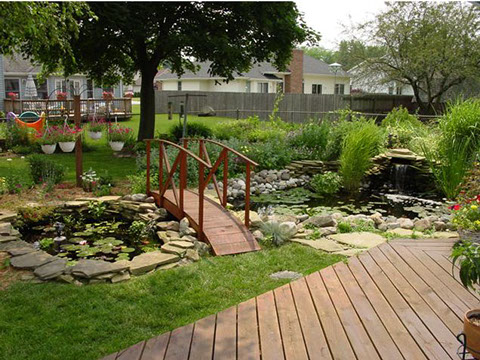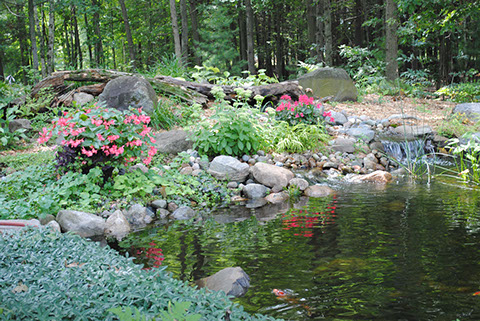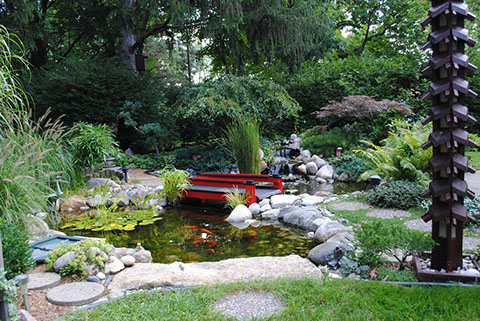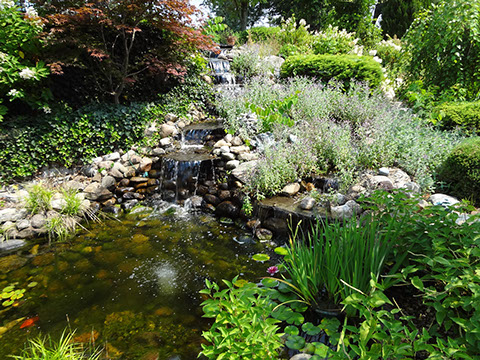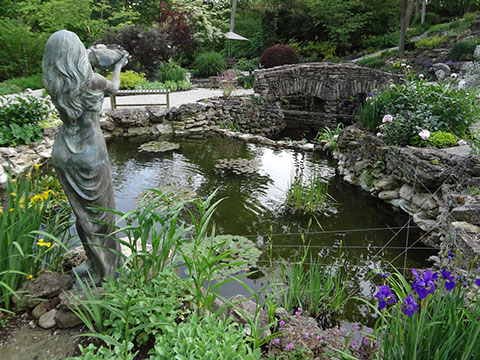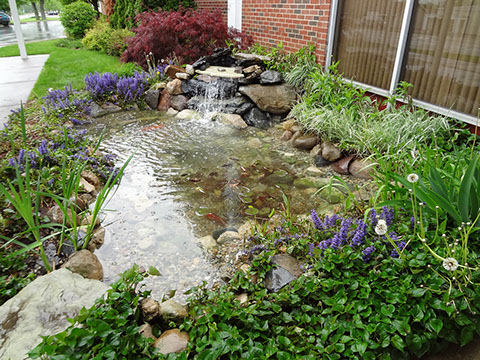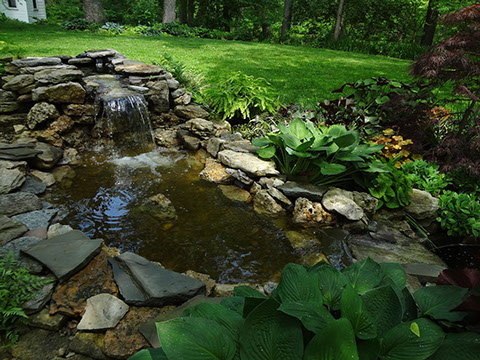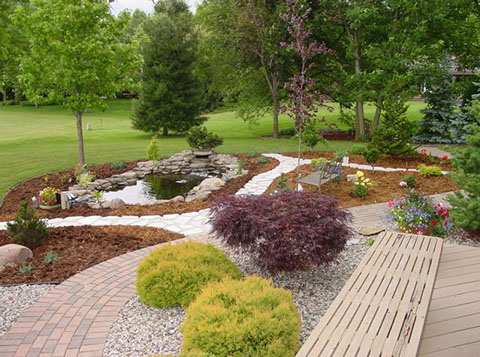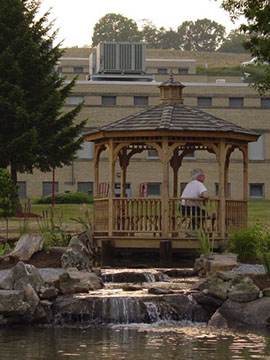
Water Gardens
If you have ample space in your yard and want koi, goldfish and aquatic plants then a Water Garden (Pond) is for you. Add a streambed to enhance the look as well!
Is this right for your space?
Space
The average water garden is about 11 feet wide x 16 feet long or about 2000 gallons but they can be as small as 6 feet x 8 feet or about 550 gallons. Keep in mind that you will want 2 to 3 feet of landscape bed area around the pond for plants and flowers.
Tip: grab your garden hose and use it to layout the size and shape you’d like your pond to be. Also try viewing the size from indoors and out to obtain a true viewing perspective.
Cost
In most cases, a water garden will be the most costly water feature option. On average, a professionally installed water garden will range from $2,500 to $7,500+ depending on size and type of rockwork involved. When you factor in the additional benefits and enjoyment of fish and aquatic plants a water garden is well worth the investment!
Safety
We recommend that most water gardens be a minimum of 24” deep but a depth of 30” is even better since it will provide more area for the fish to winterize in the pond and provide a deeper area for the fish to retreat to in the event a predatory bird comes to your pond. The first ledge of the pond, however, is typically only 8 to 12” in depth therefore providing a shallow area around the ponds perimeter as shown in the water garden cross section on the following page.
Maintenance
Maintaining a water garden is simple and will take only 15 minutes a week. The net & mat located inside the skimmer will need to be cleaned about once every 10 to 14 days. This should only take 5 minutes to complete. Besides regular skimmer maintenance, beneficial bacteria will be added to the pond weekly.
Fish
Adding Koi & Goldfish create color and interest to the water garden. Koi & Goldfish are interactive and friendly, especially at feeding time. Fish are also attractive, interesting, and even personable. Their color will enhance the visual impact of your pond.
Aquatic Plants
One of the best things about a water garden is the variety of aquatic plants you can grow. Water Lilies are the most sought after aquatic plant. Their ability to spread across the ponds surface and flower throughout the season make them a wonderful choice. Lily pads shade the pond water from the heat of the summer sun, allowing fish to retreat underneath the shelter of their leaves.
Complete System
The 5 Elements of a Healthy Pond Eco-System.

1. The first of these elements is the filtration system consisting of a mechanical skimmer filter and biological waterfall filter. The skimmer will not only prefilter the water and house the pump; it will also skim debris from the water’s surface to prevent the accumulation of debris on the ponds bottom. The waterfall box provides surface area for beneficial bacteria to colonize and remove excess nutrients from the water thereby keeping your pond clean and clear.
2. Rocks and gravel serve to protect the pond liner from UV light degradation. They also provide additional surface area for bacteria to colonize and break down excess nutrients. This also provides a major aesthetic benefit making your pond look very natural.
3. The pump creates a recirculation system that keeps the water moving, draws the debris and leaves into the skimmer, and keeps the waterfall fed with a constant supply of fresh water.
4. Fish are an integral part of the pond eco-system. Fish are often seen as high maintenance but this is a misconception. Fish actually reduce pond maintenance as they graze and eat string algae and bottom feed on the ponds bottom.
5. Aquatic plants are Mother Nature’s true filters, removing nutrients in the water and depriving algae of their food source. There are many options like waterlilies, lotus, marginal shoreline plants, and floating plants.

